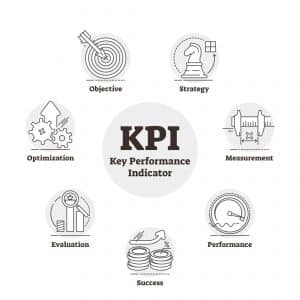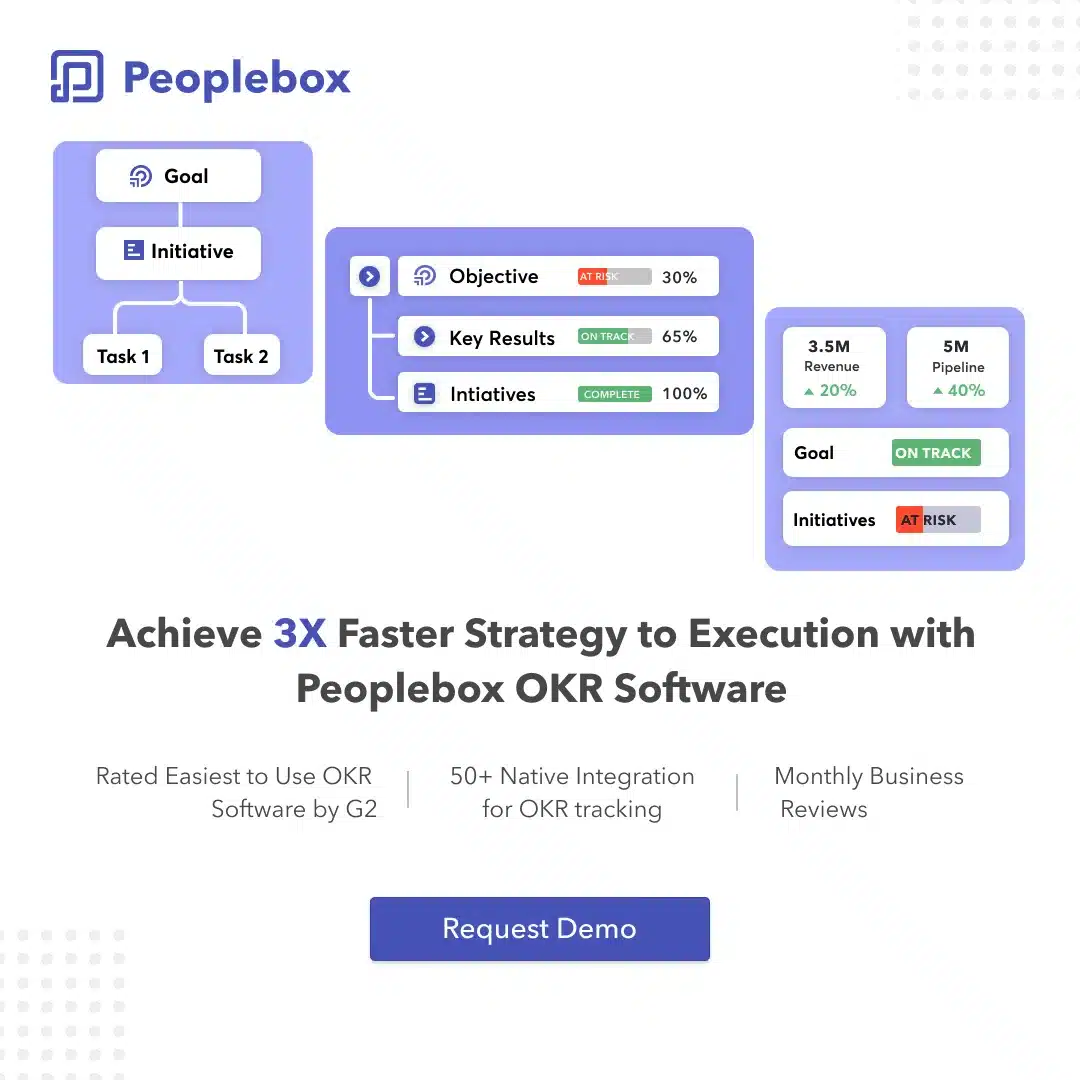
The COVID-19 pandemic has caused a lot of uncertainty and necessitated rapid changes to many businesses. Many companies have gone remote during this crisis to maintain business continuity.
The pandemic has exacerbated the isolating nature of remote work by preventing team members from meeting physically.
Remote workers do not have visibility on what their teammates are doing, thus managers have to be deliberate about communicating clearly and checking in often with team members.
Setting OKRs for remote teams is a good way to reduce misunderstanding, confusion, and delays.
OKRs for remote teams ensure that employees always know what others are doing and they are not left out of the loop.
History of OKRs
The concept of OKRs was developed by Andy Grove while he was working at Intel. He describes it in detail in his book, High Output Management.
In 1947, John Doerr joined Intel and learned about the OKR methodology. When he joined Google in 1999, he introduced the goal-setting framework to the company and the idea really took off.
Since then, many big-name companies have adopted the OKR methodology at some point in time, such as LinkedIn, Spotify, Sears, Oracle, Zynga, and Twitter.
Remote companies like Piktochart, Buffer, Flock, and CoWorker also use OKRs.

Andy Grove, often called the ‘Father of OKRs,’ cautions against linking OKRs directly to salary schemes or employee bonuses because it makes people unwilling to take risks to meet the set goals.
“OKRs are meant to pace a person – to put a stopwatch in his own hand so he can gauge his own performance. It is not a legal document upon which to base performance reviews.”
Andy Grove, Founder & Former CEO, Intel
What are OKRs (Objectives and Key Results)?
OKR (Objectives and Key Results) is a goal-setting method that allows employees to collaboratively set and execute personal, team-level, and company-wide goals using measurable results while ensuring that everyone moves in the same direction.
It can be done using spreadsheets, but more commonly, specialized OKR software is used.
Please note that OKRs are different from other goal-setting methods like balanced scorecards and KPIs.
OKRs should also be public so that everyone knows about the company’s objectives and the metrics for success. Google follows this principle of making OKRs visible to everyone.
John Doerr, author of Measure What Matters and OKR evangelist, describes OKRs as
I will (Objective) as measured by (this set of Key Results).
Doerr says that OKRs are like the yin and yang of goal setting. Without objectives, key results don’t have a purpose. Without key results, objectives cannot be fulfilled properly.
Elements of OKRs

The OKR method has two key elements:
Objectives
In simple language, objectives state where you want to go or what you want to achieve.
Usually, 3-5 high-level objectives are set for the company, team, or individual that provide the bigger picture.
They are not necessarily time-bound and can be rolled over from quarter to quarter or year to year.
They should be tangible and action-oriented, but may or may not be objectively measurable. Objectives are meant to be ambitious and should make you slightly uncomfortable.
An objective is considered complete when 70%-75% of the results have been achieved. If 100% of the results are achieved, then it usually means that the objectives were not challenging enough.
Pro tip: Objectives are not projects with sub-tasks; they are forward-thinking and inspirational goals.
Good example of an objective: Increase market reach by 30% in Q3.
Bad example of an objective: Keep increasing revenue. (Does not push for new achievements)
Key Results
For each objective, there can be 3-5 measurable key results to track progress.
The ideal key result is quantitative, measurable, and objectively gradable.
It is good to use revenue-based key results wherever possible. Financial key results may also be used in other cases, such as average deal volumes, sales, profitability goals, or any other figures in sales reports or other financial documents.
Pro tip: Key results should show the most important things that need to be done in a quarter, not every task that is done in a day.
Key results can be measured on a scale of 0-100% or 0-1.0 or any numerical unit, such as the number of items or rupee amount.
They can also show if an action is done or not done, so can be measured as a binary 0 or 1.
Good example of key result: Conduct 15 customer surveys and analyze the responses.
Bad example of key result: Launch a new line of products.
The SMART (Specific, Measurable, Achievable, Relevant, Time-Bound) model should be used to set key results. They should be challenging, but not impossible to meet.

Example of OKR
Objective: Increase internal employee engagement
Key Results:
- Interview 50 employees for suggestions on improving work culture
- Conduct 2 all-hands meetings per month with motivational talks
- Implement OKR software in all 10 teams of the company
How often should you set OKRs for remote teams?
John Doerr suggests setting OKRs every 1-3 months because it is long enough to see real progress, but not too long that people lose the sense of urgency in meeting their goals.
OKRs may have overlapping timelines i.e. annual OKRs may be broken down into quarterly or even monthly OKRs.
Steps to set OKRs for remote teams
Remote teams benefit from OKRs by having common goals to work towards and visibility over what other people on the team are doing.
To set OKRs for remote teams, the following steps can be taken:
Introduce your remote team to OKRs

For the OKR method to work well, it is important to secure buy-in from everyone. Managers must be transparent about why OKRs are being introduced to the organization.
Research literature shows that committing to goals has a positive effect on performance, so the first step is to ensure all remote team members understand how the OKR method works and how it will help them.
Dick Costolo, ex-CEO of Twitter, talks about how OKRs help:
As you grow a company, the single hardest thing to scale is communication. It’s remarkably difficult. OKRs are a great way to make sure everyone understands how you’re going to measure success and strategy.
It’s a good idea to introduce OKRs at an all-hands meeting or during a standup meeting. Allow enough time for remote workers to ask questions and focus on quelling any concerns.
Communicate company objectives clearly

Once everybody has gained a complete understanding of the OKR methodology, it is time to clearly communicate the company’s high-level objectives.
This is important because remote team goals and personal goals have to be aligned with company goals.
A top-down approach
Usually, senior management defines the company OKRs first and then asks managers to set OKRs for remote teams in collaboration with team members based on the company’s goals.
Next, remote team members set their personal goals in accordance with the team’s goals.
A bottom-up approach
In some companies, a ‘bottom-up approach’ may also be taken–all employees are asked to provide suggestions for the company’s OKRs for the next quarter.
Then, the team members come together to determine the OKRs, making changes as required.
Questions to think about when setting OKRs for remote teams:
- Do the goals of the team connect to any of the key results of the company?
- Will the team goals help the company meet its OKRs?
- Are there areas around which team members think they should be working?
Thus, either a ‘top-down approach’ or a ‘bottom-up approach’ may be used to set OKRs for remote teams. The important thing is to ensure that team and individual goals work well with the organizational goals.
Set individual OKRs in collaboration with the employee

It is vital that managers set and execute OKRs for remote teams in collaboration with the remote employee. The employee needs to understand how OKRs will help organize teamwork to feel engaged with his goals.
It is also important to showcase OKRs as an opportunity to learn and not a metric to evaluate performance. This will ensure that remote employees are not playing it safe and unwilling to take risks to meet their goals.
Employee buy-in and accountability cannot be forced–it will happen only when people are fully convinced of the benefits.
Managers and their reports can get on a video call to discuss ideas around setting personal OKRs.
Avoid establishing more than 3-5 objectives per quarter so that people are not overstrained. For each objective, outline around 3 key results.
Objectives should be phrased such that they are concrete, not ambiguous, and convey some sort of endpoint. e.g. Create a content strategy for Q3.
Key results should describe measurable outcomes that help meet the stated objective.
Don’t use words like ‘analyze’ or ‘participate’ to phrase key results because they describe activities and not outcomes.
For e.g. ‘Publish 10 blog posts by November 15’
Review OKRs frequently and adjust as needed

‘Set and forget’ is a common mistake people make with the OKR method.
Once OKRs have been collaboratively set for remote teams, it is necessary to regularly review them to track progress and have discussions around what’s working and what’s not.
It is a good idea to have weekly OKR check-ins with employees. The one on one meeting is a suitable platform for these check-ins.
At each check-in, the following points may be discussed:
- What is the current status of the goal?
- Is the report facing difficulty working toward the goal due to other projects?
- Has the report already achieved the goal and thus needs more challenging ones?
- What are the learnings of the past week? Any knowledge gained?
- What are the plans for the coming week?
Many organizations use OKR software to streamline OKR activities for remote teams.
At the end of each quarter, remote teams should conduct a review of the goals and update OKRs as required.
Pro tip: OKRs are meant to be flexible. It is absolutely okay to make changes to your key results mid-cycle or even discard them if they don’t meet the purpose. Objectives are usually long-term, but they can also be altered to keep pace with changing realities.
How often teams conduct check-ins depends on many factors, such as how strong the internal communication system is and how well team members can predict outcomes based on their ability to execute goals.
Google suggests the following OKR timeline:

Benefits of setting OKRs for remote teams
In his book, Measure What Matters, Doerr described what he called the four ‘superpowers’ of the OKR methodology — focus, goal alignment, accountability, and growth — and how they set apart OKRs from other goal-setting frameworks.
The advantages of setting OKRs for remote teams are:
Increased focus
OKRs help remote teams prioritize tasks and not waste resources on objectives with low business value.
When expectations have been clearly set, remote employees show greater engagement and motivation to put in their best work.
An increased focus towards achieving set goals helps the company as a whole move forward in a determined fashion.
Goal alignment
OKRs help align goals across the company such that every employee knows what the organizational strategy is and how they are contributing towards it.
Top management sets company-level OKRs and teams can define their own OKRs in collaboration with their managers. Team-level and individual OKRs connect back to organizational objectives.
Thus, all remote team members can move in a unified fashion towards a common objective and clearly know what is expected of them.

Accountability
Since OKRs are set collaboratively, remote team members are motivated to take accountability for the assigned tasks.
Weekly check-ins ensure that employees do not fall off the wagon in terms of progress and measurable key results make sure that there is no scope for objectivity.
Growth
OKRs can be a powerful motivator for growth and learning in a remote team.
Stretch goals that are challenging but not impossible push remote employees to achieve more than they thought possible.
Google aims for a 60%-70% success rate for its OKRs. Meeting 100% of your objectives could mean that your goals are not challenging enough.
Difference between OKRs and KPIs

OKRs for remote teams should not be confused with KPIs (Key Performance Indicators).
While KPIs offer you a snapshot of how well your team or company is doing, it does not tell you how far you are from achieving your goals.
KPIs help you measure the process, but not the outcome of the process.
On the other hand, OKRs help you measure both the process and the outcome.

Common OKR mistakes to avoid
OKRs can help remote team members go beyond their abilities to achieve new things, but only when defined and implemented correctly.
Here are some of the common mistakes people make when outlining OKRs:
OKRs are not challenging enough
Teams often think that meeting 100% of their OKRs is a great milestone. They couldn’t be more mistaken!
Aim to reach around 70%-80% of your objectives in each quarter, and you will know that your OKRs are challenging enough.
Otherwise, you simply haven’t put in any effort to go beyond what you can currently do or what your customers want.
Too many OKRs
There should be a maximum of 5 objectives per quarter and around 3-5 key results per objective.
Too many OKRs will remove the focus from one’s priorities and overextend the team’s resources.
Keep OKRs limited to a manageable number to reduce confusion and increase focused effort.
Key Results are not measurable
If the key results are not measurable, then they don’t provide a clear picture of whether the remote team is moving towards completing the objective or how far they are from reaching it.
Key results are outcomes that measure whether an objective has been achieved, thus they should be defined quantitatively.

No regular OKR check-ins
The OKR method is meant to be agile, with regular check-ins every week or every two weeks to review the progress made, adapt to new information, discard goals that no longer work, and course-correct whenever necessary.
Otherwise, by the time the quarterly review is done, teams may find that they have fallen far behind on their goals.
Lack of transparency
Remote work is more challenging than in-office work because of the barriers to communication and visibility.
Thus, being transparent about OKRs and involving both manager and report when setting OKRs is important to maintain employee’s motivation and engagement.
Management should also communicate the bigger picture to their remote teams and help them understand how their contributions help achieve the set goals.
Summing Up
OKRs for remote teams help establish and communicate high-level organizational goals in a transparent, focused, and organized manner.
OKRs are especially helpful for remote teams that are rapidly growing or those that need to find a new way to improve productivity and meet goals.







